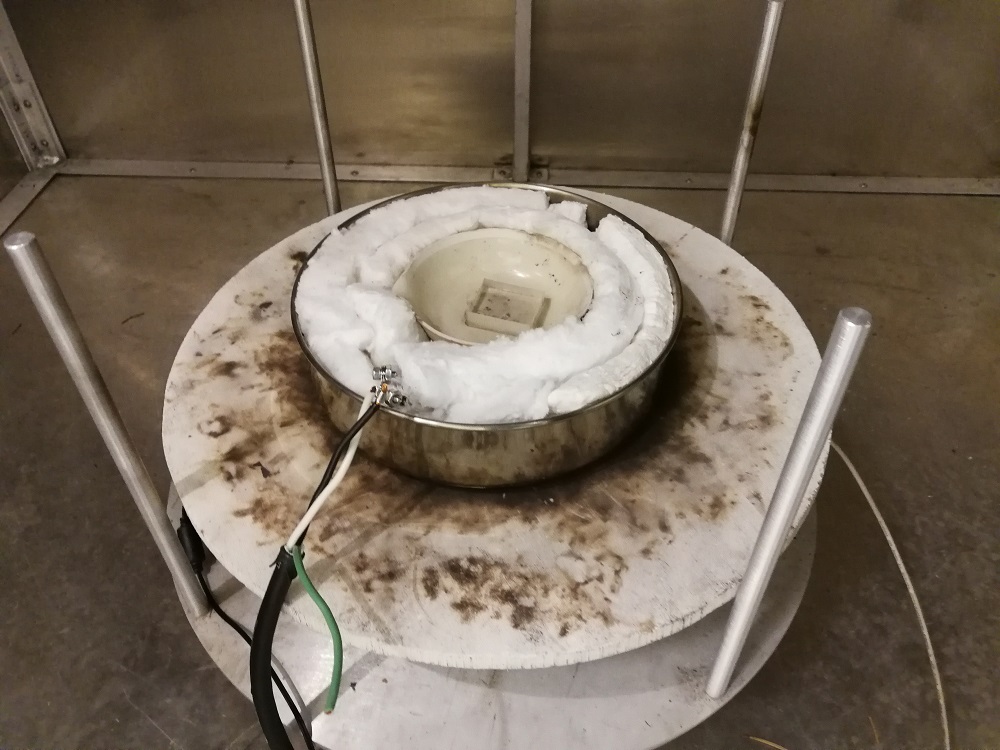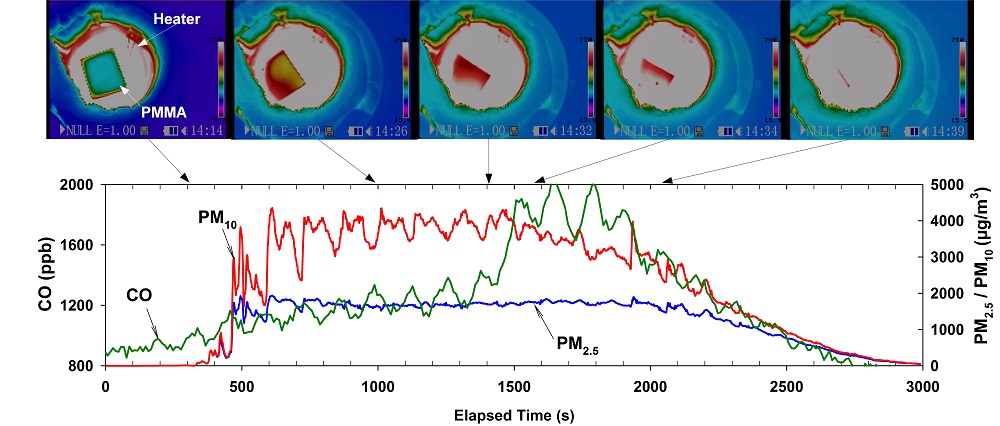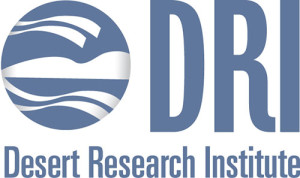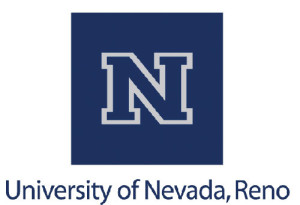
Nevada NASA EPSCoR Highlight
Particle Detection and Characterization for Spacecraft Fire Safety
Science PI: Xiaoliang Wang (Desert Research Institute)
Co-PI: W. Patrick Arnott (University of Nevada, Reno)
Detecting smoke at the earliest stage of a fire is critical for spacecraft safety. Conventional spacecraft smoke detectors are not optimized for space fires and therefore have lower sensitivity and higher false alarm rates. This project established spacecraft fire safety research capabilities in the Nevada System of Higher Education (NSHE) by extending the combustion laboratory capability and leveraging the expertise of aerosol instrumentation, particle characterization, and fire science in NSHE. With an aim to optimize fire detection for space applications, a prototype smoke sensor package with an array of gas and particle sensors was assembled and tested. Two space-relevant materials were burned in flaming and smoldering conditions, and the smoke emissions were characterized for gas and particle concentrations, particle size distribution, morphology, and optical properties. The project team worked closely with the NASA Spacecraft Fire Safety Experiments (Saffire) team in recording and interpreting data from the DustTrak DRX aerosol monitor. The infrastructure and findings from this project will benefit researches on smoke characterization for spacecraft, wildland, and general fires.
PMMA prior to smoldering on left and to the right are Infrared pictures (top) and concentrations (bottom) of carbon monoxide (CO), PM2.5 and PM10 during smoldering combustion of a Poly(methyl methacrylate) (PMMA) sample in a temperature-controlled heater.
Return on Investment (ROI) To Date
Proposals Funded: 1 ($256,875)
Peer-reviewed publications: 0
Presentations: 1 abstract submitted
Students impacted, research experience and expertise: 5




